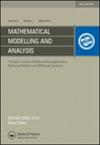基于阶跃级数交换的多卷混沌吸引子自相似技术
IF 1.4
3区 数学
Q1 MATHEMATICS
引用次数: 28
摘要
自相似动力学在机械加工、图像压缩、网络流量预测、生物动力学、神经树突模式等领域都有广泛的应用,它代表了一个分形过程的一部分,即一个物体完全或近似精确地再现其本身的一部分。这些复制过程在混沌理论中也是非常重要和迷人的。它们在我们的环境中以生长螺旋的形式自然存在,如罗马花椰菜、树木等。由于混沌理论的应用范围非常广泛,寻找替代方法来再现自相似动力学已经引起了许多从事混沌理论研究的作者的注意。本文利用阶跃级数转换过程、Julia技术和分形-分数形动力学三个组合概念,在吸引子混沌系统中创建了各种形式的自相似动力学,最初是两卷、五卷和七卷。在每种情况下,模型的可解性都是通过数值技术和相关的图形模拟来解决的。似乎初始系统能够触发一个自相似过程,产生自身或自身部分的精确或近似精确的副本。此外,复制过程中所涉及的一些模型参数也会对复制的动力学特性产生影响。使用数学概念来重新创建通常以自然方式出现的特征被证明是一种高超的技术,因为相关的应用对工程师来说很多。本文章由计算机程序翻译,如有差异,请以英文原文为准。
Self-Similarity Techniques for Chaotic attractors with Many Scrolls using Step Series switching
Highly applied in machining, image compressing, network traffic prediction, biological dynamics, nerve dendrite pattern and so on, self-similarity dynamic represents a part of fractal processes where an object is reproduced exactly or approximately exact to a part of itself. These reproduction processes are also very important and captivating in chaos theory. They occur naturally in our environment in the form of growth spirals, romanesco broccoli, trees and so on. Seeking alternative ways to reproduce self-similarity dynamics has called the attention of many authors working in chaos theory since the range of applications is quite wide. In this paper, three combined notions, namely the step series switching process, the Julia’s technique and the fractal-fractional dynamic are used to create various forms of self-similarity dynamics in chaotic systems of attractors, initially with two, five and seven scrolls. In each case, the solvability of the model is addressed via numerical techniques and related graphical simulations are provided. It appears that the initial systems are able to trigger a self-similarity process that generates the exact or approximately exact copy of itself or part of itself. Moreover, the dynamics of the copies are impacted by some model’s parameters involved in the process. Using mathematical concepts to re-create features that usually occur in a natural way proves to be a prowess as related applications are many for engineers.
求助全文
通过发布文献求助,成功后即可免费获取论文全文。
去求助
来源期刊
CiteScore
2.80
自引率
5.60%
发文量
28
审稿时长
4.5 months
期刊介绍:
Mathematical Modelling and Analysis publishes original research on all areas of mathematical modelling and analysis.

 求助内容:
求助内容: 应助结果提醒方式:
应助结果提醒方式:


